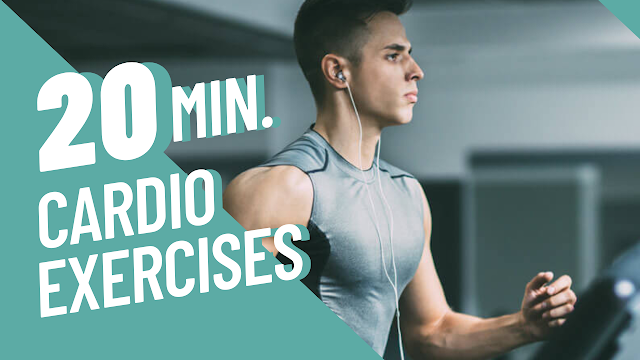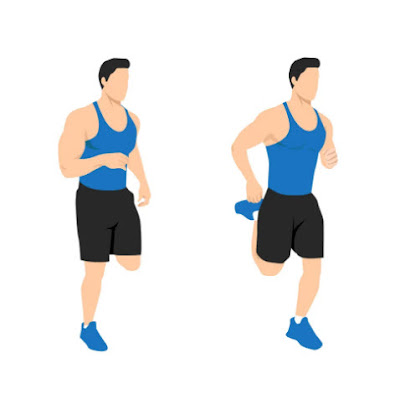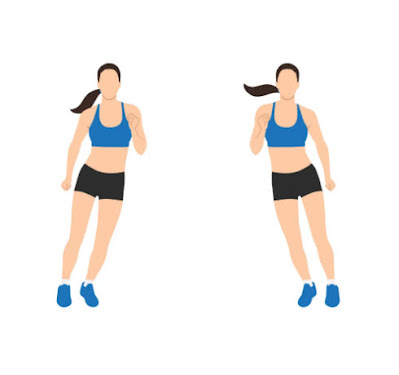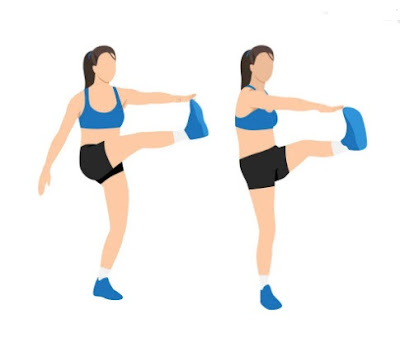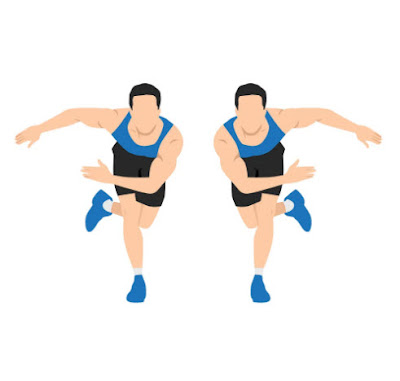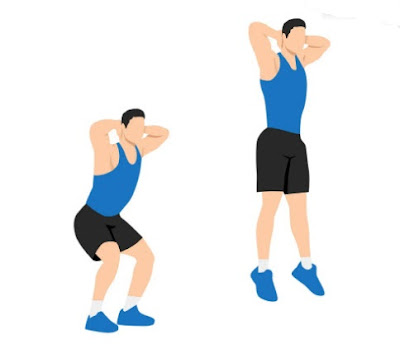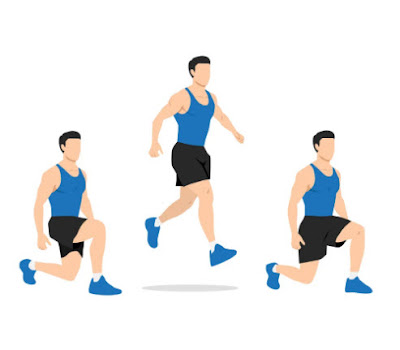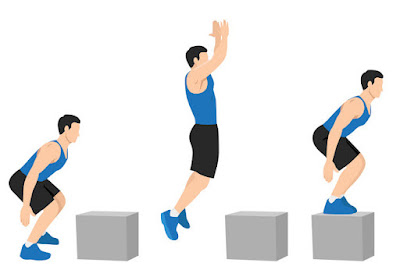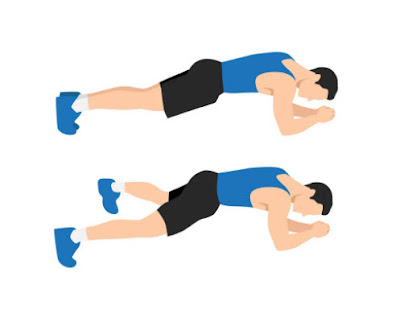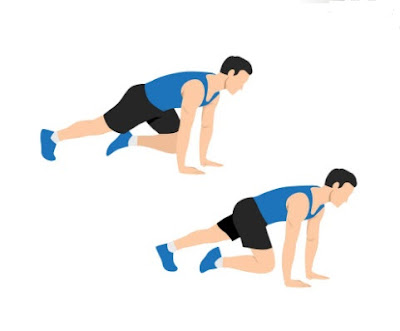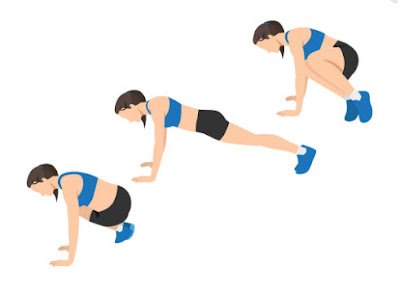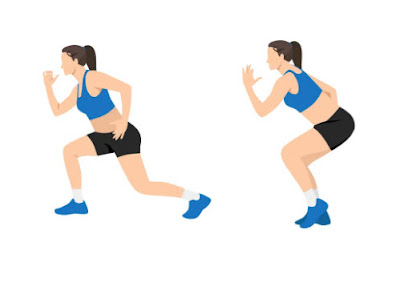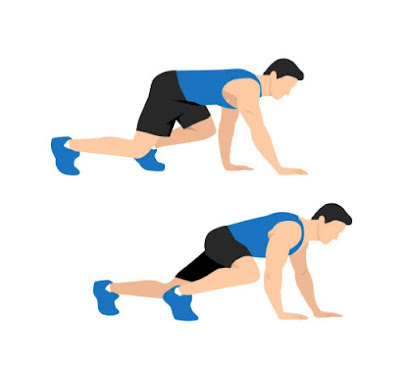Cardiovascular Exercises play a crucial role in maintaining overall health and fitness. They are specifically designed to elevate the heart rate, increase lung capacity, and improve the efficiency of the cardiovascular system.
Whether you are aiming to lose weight, enhance endurance, or reduce the risk of chronic diseases, incorporating cardiovascular exercises into your routine is essential.
Whether you are aiming to lose weight, enhance endurance, or reduce the risk of chronic diseases, incorporating cardiovascular exercises into your routine is essential.
- What Exactly is Cardiovascular Exercises?
- Why is Cardiovascular Exercises Important?
- Benefits of Cardiovascular Exercises
- Types of Cardiovascular Exercises
- How to Design an Effective Cardiovascular Exercises Routine
- Best Cardio Exercises for Every Level of Fitness
- Safety Considerations for Cardiovascular Exercises
- Tips for Maximizing Cardiovascular Exercises
- Incorporating Cardiovascular Exercises into Daily Life
- Monitoring Progress and Setting Goals for Cardiovascular Fitness
You won't believe how much information this article provides!
Well let's start.
What Exactly is Cardiovascular Exercises?
Cardio fitness refers to the ability of your heart, lungs, and blood vessels to efficiently deliver oxygenated blood to your working muscles during physical activity. It's like having a well-oiled machine that keeps your body running smoothly.
The Importance of Cardiovascular Health
Maintaining good cardiovascular health is crucial for overall well-being. Regular cardiovascular exercises can help lower the risk of heart disease, high blood pressure, stroke, and other chronic conditions. Plus, it's an excellent way to improve your fitness level and endurance.
Benefits of Cardiovascular Exercises
1.Improved Heart Health
Engaging in cardiovascular exercises strengthens your heart muscle, making it more efficient at pumping blood. This can lower your resting heart rate and blood pressure, reducing the strain on your cardiovascular system.
2.Weight Management and Fat Loss
Cardiovascular exercises are a great way to burn calories and shed those extra pounds. Regular aerobic activities, such as running, cycling, or swimming, can help you maintain a healthy weight and reduce body fat.
3.Increased Stamina and Endurance
When you consistently challenge your cardiovascular system, it adapts and becomes more efficient. This leads to improved stamina and endurance, allowing you to tackle physical activities with greater ease and for longer durations.
4.Reduced Risk of Chronic Diseases
Regular cardiovascular exercises have been linked to a decreased risk of chronic diseases, including type 2 diabetes, certain types of cancer, and metabolic syndrome. It also helps improve insulin sensitivity, which is important for blood sugar control.
Types of Cardiovascular Exercises
1.Aerobic Exercises
Aerobic exercises are continuous, rhythmic activities that elevate your heart rate and involve large muscle groups. Examples include walking, jogging, swimming, dancing, or using cardio machines like treadmills or ellipticals.
2.Interval Training
Interval training involves alternating between high-intensity bursts of activity and periods of active recovery. This method can be applied to any cardiovascular exercise and is an effective way to boost fitness levels and calorie burn.
3.Cross-training
Cross-training involves incorporating a variety of cardiovascular exercises into your routine. This not only prevents boredom but also works different muscle groups, improving overall fitness and reducing the risk of overuse injuries.
4.High-Intensity Interval Training (HIIT)
HIIT workouts are short, intense bursts of exercise followed by short recovery periods. They can be time-efficient and highly effective at improving cardiovascular fitness. Exercises like sprinting, burpees, or kettlebell swings can be incorporated into a HIIT routine.
Designing a Cardiovascular Exercise Routine
1.Setting Goals for Cardiovascular Fitness
Before starting a cardiovascular exercise routine, it's important to set realistic goals. Whether your aim is to improve endurance, lose weight, or reduce health risks, having specific targets will help keep you motivated and focused.
2.Choosing the Right Exercise for You
Consider your preferences, fitness level, and any existing health conditions when selecting cardiovascular exercises. Pick activities that you enjoy and can safely perform. This will make it easier to stick to your routine in the long run.
3.Creating a Balanced Routine
A well-rounded cardiovascular exercise routine should include a mix of aerobic activities, interval training, and cross-training. Aim for at least 150 minutes of moderate-intensity aerobic exercise or 75 minutes of vigorous-intensity exercise each week, along with strength training exercises twice a week.
4.Progression and Overload
Gradually increase the intensity, duration, or frequency of your cardiovascular workouts to continue challenging your cardiovascular system. This progressive overload stimulates further improvements in fitness and prevents plateaus.
Now it's time to lace up your shoes, find a fun activity, and get your heart pumping. Remember, cardiovascular exercises not only benefit your health, but they can also be enjoyable. So, embrace the sweat, and let's get moving!
19 Effective Cardio Exercises for Every Level of Fitness
These exercises can form a cardiovascular exercise program.
For example, a person could do each exercise for 45 seconds to 1 minute, rest for 30 seconds, and move on to the next set.
As their fitness levels increase, people may wish to perform these exercises in circuits.
To perform circuits, a person completes 30–60 second rounds of each chosen exercise in succession before resting for 30–60 seconds. They then perform the entire course again, as many times as they prefer.
Cardiovascular Exercises for Beginner
Beginner exercises do not require previous experience of physical activity or special training to perform. A person can usually increase the intensity as they advance in their cardiovascular ability.
High knees
- Stand with your legs together and arms at your sides.
- Lift one knee toward your chest. Lower your leg and repeat with the other knee.
- Continue alternating knees, pumping your arms up and down.
Butt kicks
- Stand with your legs together and arms at your sides.
- Bring one heel toward your butt. Lower your foot and repeat with the other heel.
- Continue alternating your heels and pumping your arms.
Lateral shuffles
- Stand with your feet hip-width apart, knees and hips bent. Lean forward slightly and brace your core.
- Lift your right foot, push off your left foot, and move right while keeping your form.
- Place your feet together. Continue shuffling to the right.
- Repeat the same steps to the left side.
- To evenly work both sides, shuffle left and right for the same amount of space.
Crab walk
- Sit on the floor, knees bent and feet flat. Place your hands on the floor under your shoulders, fingers pointing forward.
- Lift your hips off the floor. “Walk” backward using your arms and legs, keeping your weight evenly distributed between your arms and legs.
- Continue walking backward for the desired distance.
Standing oblique crunch
- Stand with your feet shoulder-width apart. Place your hands on the back of your head, elbows pointing outward.
- Bend to the right, moving your right elbow down and right knee up.
- Return to starting position. Repeat on the left side.
Speed skaters
- Start in a curtsy lunge, both knees bent and your right leg diagonally behind you. Bend your right arm and straighten your left arm.
- Push off your left leg, moving your right leg forward. Bring your left leg diagonally behind you and switch arms.
- Continue “skating” left and right.
Jumping jacks
- Stand with your legs together and arms at your sides.
- Bend your knees slightly. Jump and spread your legs wider than shoulder-width, lifting your arms overhead.
- Jump to center. Repeat.
Cardiovascular Exercises for Intermediate
As you build endurance and strength, progress to these intermediate moves.
Squat jumps
- Start with your feet shoulder-width apart. Bend your knees and lower into a squat.
- Swing your arms back. Quickly swing your arms upward and jump.
- Land gently back in a squat. Repeat.
Standing alternating toe touches
- Stand with your feet shoulder-width apart and arms at your sides. Brace your core.
- Lift your right leg straight up. Simultaneously raise your left hand up and over, reaching toward your right toes.
- Repeat with your left leg and right hand.
Lunge jumps
- Start in a lunge, both knees bent at 90-degree angles. Point your feet forward.
- Brace your core, pull your shoulders down, and swing your arms back. Quickly swing your arms upward and jump. Simultaneously switch legs.
- Land in a lunge. Repeat.
Box jumps
- Stand in front of a knee-high box or platform. Place your feet hip-width apart and arms at your sides. Engage your core.
- Bend your knees and hinge forward at your hips, keeping your back flat. Swing your arms up and jump explosively onto the box.
- Land gently, leaning forward slightly. Jump back off the box. Repeat.
Plank jacks
- Start in a plank with your hands under shoulders and your body straight. Bring your feet together.
- Jump and spread your legs wider than shoulder width.
- Jump back to a plank and repeat.
Cardiovascular Exercises for Advanced
When you’re ready for a challenge, try these advanced cardio moves. Each exercise involves greater coordination and multiple body movements.
Mountain climbers
- Start in a plank with your hands under your shoulders and your body straight. Flatten your back and brace your core.
- Lift your right knee toward your chest. Quickly switch, moving your right knee out and lifting your left knee in.
- Continue alternating legs.
Plank skiers
- Start in a plank with your hands under your shoulders and your body straight. Bring your legs together.
- Jump your feet to the right, rotating to bring your knees outside your right elbow. Keep your legs together.
- Jump back into a plank. Repeat on the left side.
Diagonal jumps
- Start in lunge position, both knees bent at 90 degrees. Turn your body toward the right corner of the room.
- Brace your core, pull your shoulders down, and swing your arms back. Quickly swing your arms up, jump, and switch legs.
- Land in a lunge, facing the left corner.
- Continue jumping and switching legs.
Rotational jacks
- Start with your feet and hands together.
- Jump into a squat, landing with your knees bent, feet wider than shoulder-width apart, and toes pointed slightly out. Simultaneously rotate your waist, reaching your right hand up and left hand to the floor.
- Jump into starting position before jumping back into a squat, reaching your left hand up and right hand down.
- Continue jumping and switching arms.
Burpees
- Stand with your feet shoulder-width apart. Squat and place your hands on the floor.
- Jump your feet back into a plank. Do one pushup.
- Jump your feet back into a squat. Jump up, reaching your arms upward. Repeat.
Inchworm crawl
- Stand with your feet together. Brace your core, bend forward at your hips, and reach your arms toward the floor. Keep your knees straight but relaxed.
- Set your fingers on the floor, softly bending your knees. Plant your feet and slowly walk your hands forward into a plank with your hands under your shoulders.
- Stiffen your core and do one pushup.
- Slowly walk your feet toward your hands. Reach your arms forward and repeat.
To make it harder, do more than one pushup. You can also skip the pushup altogether for an easier move.
Safety Considerations for Cardiovascular Exercises
1.Consulting with a Healthcare Professional
Before embarking on any cardiovascular exercise routine, it's always a good idea to consult with a healthcare professional. They can assess your individual health needs and provide guidance on the type and intensity of exercises that are safe for you.
2.WarmUp and CoolDown
Don't rush into your cardio workouts like a bull in a china shop. Take the time to properly warm up your muscles with dynamic stretches and light movements. Similarly, cooling down after your workout with some static stretches can help prevent muscle soreness and promote recovery.
3.Proper Form and Technique
Executing cardiovascular exercises with proper form and technique is crucial to prevent injuries and get the most out of your workouts. Whether you're running, biking, or doing high-intensity interval training, focus on maintaining good posture, engaging the right muscles, and avoiding excessive strain on your joints.
4.Listening to Your Body
Your body is a smart cookie, so listen to it! Pay attention to any pain or discomfort during your workouts. If something doesn't feel right, it's better to err on the side of caution and take a break. Pushing yourself too hard can lead to injuries and setbacks.
Tips for Maximizing Cardiovascular Workouts
1.Variety and Fun in Your Workouts
Cardio workouts don't have to be mind-numbingly boring. Mix things up by trying different types of exercises or incorporating elements of cross-training. Spice up your routine with some upbeat music or find a workout buddy to keep you entertained and motivated.
2.Maintaining Consistency
Consistency is key when it comes to cardiovascular fitness. Aim for regular workouts, even if they're shorter in duration. It's better to have consistent, shorter workouts than sporadic, longer ones. Find a schedule that works for you and stick to it.
3.Monitoring and Adjusting Intensity
Pay attention to the intensity of your workouts. You want to challenge yourself, but not to the point of exhaustion or burnout. Use perceived exertion scales or heart rate monitors to gauge your effort levels and make adjustments as needed.
4.Using Technology and Wearables
Embrace the wonders of technology! Fitness apps, smartwatches, and activity trackers can help you monitor your progress, track your workouts, and stay motivated. Plus, who doesn't love a little extra gadgetry to make things more fun?
Incorporating Cardiovascular Exercises into Daily Life
1.Cardiovascular Exercises at Home
No gym? No problem! You don't need fancy equipment to get your heart rate up. Simple home exercises like jumping jacks, mountain climbers, or dancing around your living room can do the trick. Get creative and make the most of your surroundings.
2.Walking or Cycling as Transportation
Consider ditching the car for short trips and opt for walking or cycling instead. Not only will you be reducing your carbon footprint, but you'll also be getting in some cardio exercise. It's a win-win for both your health and the planet.
3.Active Lifestyle Choices
Look for opportunities to be active throughout your day. Take the stairs instead of the elevator, stretch during breaks, or squeeze in mini-workouts during TV commercial breaks. Small lifestyle changes can add up to significant cardiovascular benefits.
4.Incorporating Cardiovascular Exercises at Work
Don't let your desk job be an excuse for a sedentary lifestyle. Incorporate movement and cardiovascular exercises into your workday. Stand up and stretch regularly, take brisk walks during lunch breaks, or even try a standing desk if feasible.
Monitoring Progress and Setting Goals for Cardiovascular Fitness
1.Tracking Your Workouts
Keep a record of your cardio workouts to track your progress. Whether it's on paper, a fitness app, or a spreadsheet, documenting your efforts can provide a sense of accomplishment and help you identify areas for improvement.
2.Assessing Cardiovascular Fitness Levels
Periodically assess your cardiovascular fitness levels to gauge your progress. You can do this with fitness tests, such as the Cooper Test or the 3-Minute Step Test, or by monitoring improvements in your endurance, heart rate recovery, or speed.
3.Setting Realistic and Measurable Goals
When setting goals for cardiovascular fitness, be realistic and specific. Instead of aiming to "run a marathon," start with smaller milestones like increasing your running distance by a mile or improving your 5K race time by a certain margin. Having measurable goals gives you something to strive for and track your progress.
4.Staying Motivated and Celebrating Achievements
Don't forget to celebrate your achievements along the way! Reward yourself when you hit milestones or reach your goals. Treat yourself to a new workout outfit, a massage, or even just a pat on the back. Keeping yourself motivated and celebrating progress will make your cardiovascular journey more enjoyable.
In conclusion
cardiovascular exercises are an integral part of a healthy lifestyle. By engaging in regular cardiovascular workouts, you can strengthen your heart, improve your endurance, manage your weight, and reduce the risk of various health conditions.
Whether you prefer jogging, cycling, swimming, or any other form of cardiovascular exercise, the key is to find activities that you enjoy and that challenge you.
Remember to prioritize safety, listen to your body, and gradually increase the intensity of your workouts.
With dedication and consistency, cardiovascular exercises can help you achieve and maintain optimal fitness levels, leading to a happier, healthier life. So, lace your sneakers up , get your heart pumping, and embrace the numerous benefits of cardiovascular exercises.
Frequently Asked Question (FAQ)
1. How often should I engage in cardiovascular exercises?
Regular cardiovascular exercise is recommended for optimal health. Aim for at least 150 minutes of moderate-intensity aerobic activity or 75 minutes of vigorous-intensity aerobic activity per week. You can spread this out over several days, depending on your schedule and fitness level.
2. Can I do cardiovascular exercises if I have pre-existing health conditions?
It is important to consult with a healthcare professional before starting any exercise program, especially if you have pre-existing health conditions. They can provide personalized guidance and recommend any necessary modifications to ensure your safety and maximize the benefits of cardiovascular exercises.
3. What are some low-impact cardiovascular exercises for individuals with joint issues?
If you have joint issues or prefer low-impact exercises, there are several options available. Swimming, water aerobics, cycling, using an elliptical machine, or walking on a treadmill with cushioned surfaces are all great choices that minimize stress on the joints while still providing cardiovascular benefits.
4. Can I combine cardiovascular exercises with strength training?
Absolutely! Combining cardiovascular exercises with strength training can provide a well-rounded fitness routine. You can alternate days or incorporate both types of exercises in a single session. Just ensure you allow enough time for recovery and listen to your body to prevent overexertion and injury.
5.How often should I engage in cardiovascular exercises?
The American Heart Association recommends at least 150 minutes of moderate-intensity aerobic activity or 75 minutes of vigorous-intensity aerobic activity per week. Ideally, aim for 30 minutes of cardiovascular exercise on most days of the week for optimal health benefits.
6.Can I do cardiovascular exercises if I have joint problems?
Absolutely! There are low-impact cardiovascular exercises available that are gentler on the joints, such as swimming, cycling, using an elliptical machine, or walking on a treadmill. It's always important to listen to your body and consult with a healthcare professional for personalized advice.
7.Can cardiovascular exercises help with weight loss?
Yes, cardiovascular exercises can be effective for weight loss. They help burn calories, increase metabolism, and promote fat loss. However, it's important to combine regular cardio workouts with a balanced diet for optimal weight management results.
These are Best Cardiovascular Exercises List You Can Do Any Where.
What do you think of this guide?
Let me know by leaving a comment below, and don't forget to share this guide if you found it helpful.
